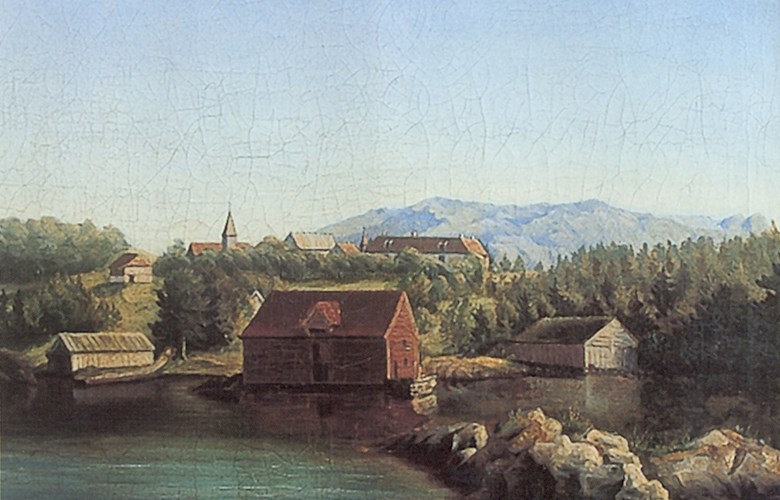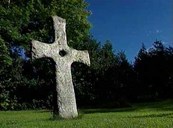Old centre and church site
The first reference to the Bru church is found in the cadastre called Bjørgynjar Kalfskinn from the 1300s. The church also had a vicar of its own. For many centuries, Svanøy was the church site for the Bru "sokn" (sub-parish) until the last church was torn down in 1872, and a new one was built at Stavang on the mainland.
From the 1560s, the farm Bru was a residence for high officials. In 1662, the Bru manor, which comprised 40% of all property tax in Sunnfjord, was taken over by the bishop Hans Svane. The island was later named after him. In 1749, the bailiff of Sunnfjord established office and residence at Svanøy.
Solid cross with mysterious inscription
W. F. K. Christie, the founder of Bergen Museum, was the first person to study the cross at Svanøy. In 1842, he wrote the following in the magazine "Urda": "Behind the chancel of the Svanøy church in Sunnfjord, there is a stone cross on the churchyard, measuring 3 ½ ells (about seven feet) above the ground. On one side, under its cross arms, there are two vertical, parallel lines, where there seem to be traces of runes, although they are not legible. This cross, when the church was erected, is said to have been moved from a former location at Brandsøy."
The old stone cross is about two metres high and 1.25 metres wide from tip to tip of the cross arms. The four "armpits" are nicely formed as open arches. Aslak Liestøl studied the cross in 1954. He dug up the base of the cross to see the part of the inscription that was hidden. He interpreted the inscription in the following way: "Tordr erected this cross after ..". The last name/word was impossible to interpret.

The origin
The legend referred to by Christie that the cross was moved to Svanøy from Brandsøy is not unlikely, as Brandsøy is also an old church site. It has been said that Saint Olaf erected the stone at Brandsøy, but there is no reason to think that this is true, particularly after the new interpretation of the runic inscription. The cross is one of four found in Norway with runes, and experts have dated the stone cross to the 11th century. Fridtjov Birkeli thinks that the cross at Korssund possibly was made by the same person, as the shape is fairly similar. He assumes that the not-interpreted name/word is not a known historical name, and that the cross therefore could have been erected for a local chieftain, perhaps one among the first to convert to Christianity in this district.




